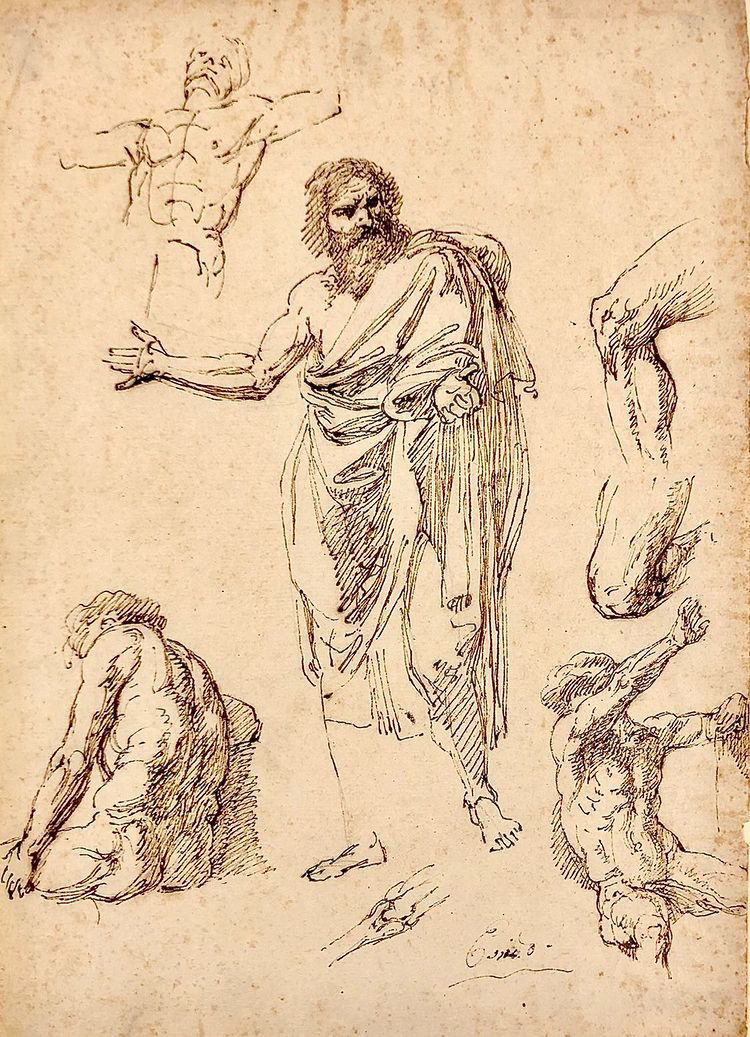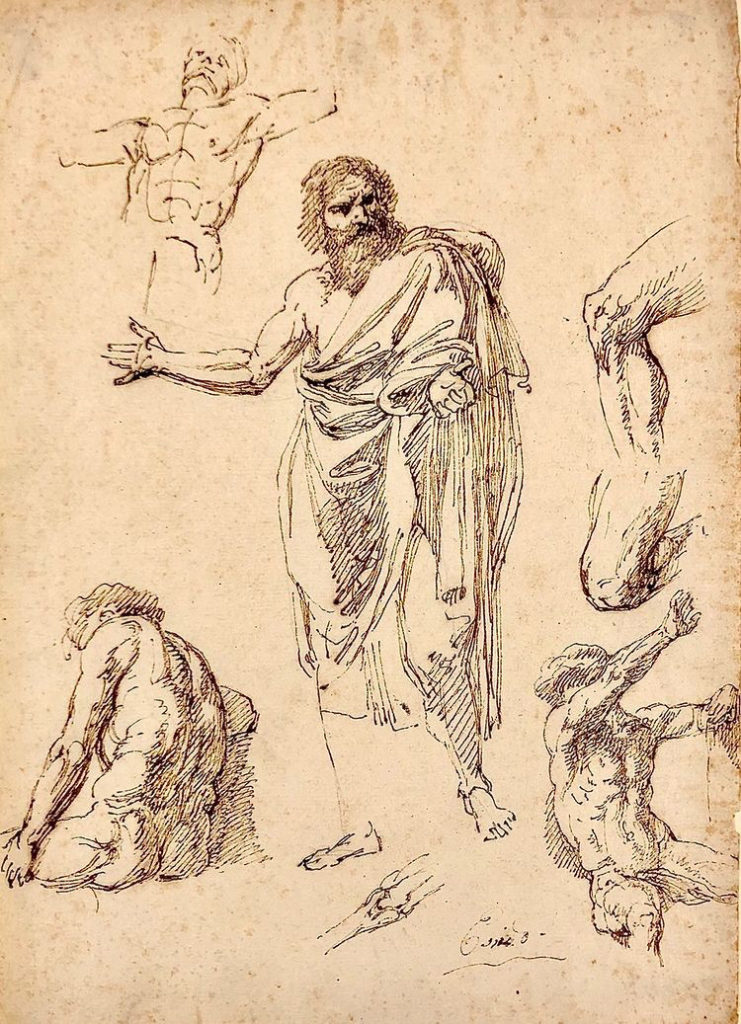This study sheet, previously listed as a « work by an unknown artist », is undoubtedly a work by Francesco Curia, which is already indicated by the old inscription « Curia« . Similar inscriptions can be found on many of his drawings (see for example Ippolito di Majo, Francesco Curia, L’opera completa, Naples, 2002, p. 25, fig. 8, p. 115, fig. 89 and p. 152, D23). The present sheet represents an important addition to the drawn oeuvre of the Neapolitan artist, one of the leading painters of the late Renaissance in Naples before the arrival of Caravaggio (Milan 1571 – 1610 Porto Ercole). The artist was largely forgotten for centuries until his works on paper were reconstructed in the second half of the 20th century. More recently, a corpus of his drawings was finally compiled (cf. Ippolito di Majo, op. cit, D1 – D102, pp. 139 – p. 179), which is based on collections of his graphic works in the British Museum in London, in the Capodimonte Museum in Naples and, above all, on a preserved sketchbook in the National Museum in Stockholm, which was acquired by the Swedish architect Nicodemus Tessin the Younger (Nyköping 1654 – 1728 Stockholm) during his stay in Italy in 1687-88 (cf. Per Bjurström & Börje Magnusson, Italian Drawings, Umbria, Rome, Naples, Nationalmuseum, Stockholm 1998, nos. 877 – 956 [no page references]). His son, Carl Gustav Tessin (Stockholm 1695 – 1770 Akerö Manor), who was also enthusiastic about drawings, was then forced to sell his entire collection, including the so-called « Curia Album » of the Swedish royal family. However, this album, which contained about 83 sheets, also contained drawings by other artists such as Battistello Caracciolo [Naples 1578 – 1635 Naples] (see Ippolito di Majo, Tra Francesco Curia e Battistello Caracciolo, Disegni della collezione Tessin a Stoccolma, in: Prospettiva, No. 95-96, 1999, p. 182 – p. 194).
Curia was taught by Giovanni Filippo Criscuolo (Gaeta ca. 1500 – 1584 Naples). Various influences can be seen in Curia’s paintings and drawings, especially those of Giorgio Vasari (Arezzo 1511 – 1574 Florence) and Francesco Salviati (Florence 1510 – 1562 Rome). In general, his youthful drawings show a strong awareness of Emilian Mannerism.
The present sheet probably shows a striding saint and several other studies of figures and limbs. Drawings of this kind, with numerous sketches and sometimes repetitive individual studies, are frequently found in Curia’s graphic oeuvre. Our sheet probably belongs to the mature creative phase and features the long vertical hatching lines characteristic of the artist’s drawing style, which define shadow areas and sometimes overlap with other groups of hatching lines. Drawings by Francesco Curia appear extremely rarely on the art market.
Attilio Gadola

Naples 1538 – 1610 Naples
Striding bearded Saint (?) and further Studies of Figures and Limbs
Pen and brown ink; 269 mm x 157 mm; Inscription: recto lower centre inscribed by an old hand in brown ink « Curia« .
Provenance: Private collection, Lucerne
Attilio Gadola

